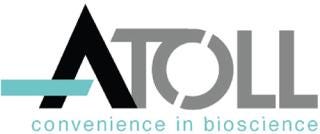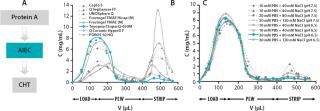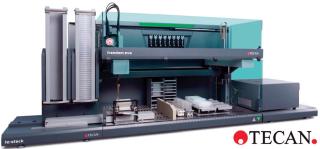Voices of Biotech
Podcast: MilliporeSigma says education vital to creating unbreakable chain for sustainability
MilliporeSigma discusses the importance of people, education, and the benefits of embracing discomfort to bolster sustainability efforts.
July 1, 2010

The demand for biopharmaceutical products, in particular, monoclonal antibodies (MAbs), is rapidly increasing during recent years. The necessity for pharmaceutical companies of being first to market combined with the need to cut development costs makes the application for high-throughput screening (HTS) techniques and tools in downstream process development indispensable.
Atoll’s 96 MediaScout® RoboColumn® array together with Tecan’s Freedom EVO® liquid handling workstation enables fully automated parallel column chromatography for the first time.
The RoboColumn® design allows the user to select any chromatographic material which is packed with due consideration to individual material compression requirements. Bed containment between two filter frits ensures high efficiency and peak symmetry similar to that of preparative and process separation columns and distinguishes the system from the current filter based systems for simple on/off sample equilibration operation.
This article describes how automated parallel chromatography can contribute to accelerate the development and optimization of a three-step MAb purification process.
Downstream Process Development
The purification of MAbs is usually well optimized and based on a platform strategy with protein A as a capture step followed by an intermediate and a polishing step (Figure 1A).

Figure 1: ()

Liquid handling workstation Freedom Evo® modified for use with MediaScout® RoboColumn® ()
Using AIEC chromatography as an intermediate purification step, running it in negative chromatography mode of operation, binding just the impurities but letting the almost pure target antibody pass through the chromatography column provides some major benefits. It leads, for example, to smaller column volume and less consumption of process relevant solvents and resources as well as nearly no dilution of the highly concentrated pure target antibody.
For this purpose a screening experiment was performed by loading protein A capture eluate on an eight-row MediaScout® RoboRolumn® 5-mm ID x 2.5-mm H (CV = 50 µL) packed with eight different AIEC chromatography media under nonbinding conditions followed by a post load wash (PLW) and a STRIP step (Figure 1B).
The AIEC media that showed the lowest protein concentration in the STRIP fraction was taken as the most suitable candidate out of the screening experiment and optimized regarding protein binding by varying salt concentration and pH of LOAD and PLW buffer (Figure 1C).
Finally the intermediate AIEC chromatography step was scaled up by running a 10.0-mL MediaScout® MiniChrom column packed with Toyopearl® SuperQ-650 M under optimized conditions using an Äkta™ LC system. A protein recovery of 98% was achieved.
Summary
The combination of Tecan’s Freedom EVO® robotic workstation and atoll’s 96 MediaScout® RoboColumn® array has the potential to shorten development time for biopharmaceutical production significantly and will contribute to overcoming future bottlenecks.
Äkta is a trademark of GE Healthcare; Freedom Evo is a registered trademark of Tecan; MediaScout and RoboColumn are registered trademarks of Atoll.
About the Author
Author Details
Tim Schroeder, Dipl.-Ing., is product manager for parallel chromatography at Atoll GmbH, Ettishofer Straße 10, D-88250 Weingarten, Germany; 49-751-5612184, fax 49-751-5612170; [email protected], www.atoll-bio.com.
You May Also Like